
Lancaster is a town in Worcester County, Massachusetts, in the United States. Incorporated in 1653, Lancaster is the oldest town in Worcester County. As of the 2020 census, the town population was 8,441.

John Stark was a New Hampshire native who served as an officer in the British Army during the French and Indian war and a major general in the Continental Army during the American Revolution. He became widely known as the "Hero of Bennington" for his exemplary service at the Battle of Bennington in 1777.

William Prescott was an American colonel in the Revolutionary War who commanded the patriot forces in the Battle of Bunker Hill. Prescott is known for his order to his soldiers, "Do not fire until you see the whites of their eyes", such that the rebel troops may shoot at the enemy at shorter ranges, and therefore more accurately and lethally, and so conserve their limited stocks of ammunition. It is debated whether Prescott or someone earlier coined this memorable saying.
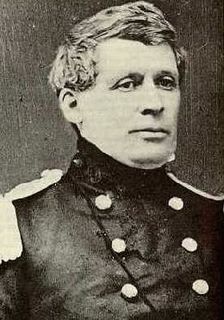
George Wright was an American soldier who served in the Mexican–American War and the American Civil War.

Dwight Foster was an American lawyer and politician from Massachusetts. He served as Massachusetts Attorney General and was an associate justice of the Massachusetts Supreme Judicial Court.
John Nixon was an American brigadier general in the Continental Army during the American Revolutionary War.
Samuel Hurd Walley was a Massachusetts businessman and politician who served as Speaker of the Massachusetts House of Representatives and as a member of the U.S. representative from Massachusetts.
William Stacy was an officer of the Continental Army during the American Revolutionary War, and a pioneer to the Ohio Country. Published histories describe Colonel William Stacy's involvement in a variety of events during the war, such as rallying the militia on a village common in Massachusetts, participating in the Siege of Boston, being captured by Loyalists and American Indians at the Cherry Valley massacre, narrowly escaping a death by burning at the stake, General George Washington's efforts to obtain Stacy's release from captivity, and Washington's gift of a gold snuff box to Stacy at the end of the war.
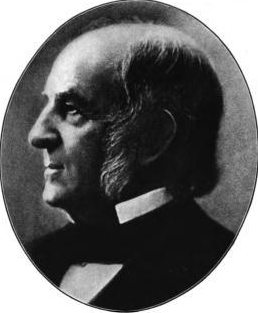
Otis C. Norcross served as the nineteenth Mayor of Boston, Massachusetts, from January 7, 1867 to January 6, 1868 during the Reconstruction era of the United States. Norcross was a candidate (1861) for the Massachusetts State House of Representatives; served as a member of Boston's Board of Aldermen from January 6, 1862 to January 2, 1865; Chairmen of the Board of Aldermen from January 4, 1864 to January 2, 1865; and served as a Trustee of the City Hospital, 1865 & 1866; and a member of the Massachusetts Governor's Council, under Gov. William Claflin (1869).

Benjamin Ruggles Woodbridge was an American physician, lawyer, farmer, and military officer who served as a colonel in the Massachusetts militia during the American Revolutionary War. Woodbridge was a commander at the Battle of Bunker Hill, and also owned a rum still, a wood lot, a grazing meadow, and a mill, and came to be the wealthiest man in South Hadley, Massachusetts. Colonel Woodbridge was also a member of the Massachusetts legislature for many years.

John Robinson was a Massachusetts militia and Continental Army officer from Westford, Massachusetts during the American Revolutionary War. On April 19, 1775, during the Battle of Concord, Robinson was the second highest-ranking officer in the field after Colonel James Barrett. Robinson marched next to Major John Buttrick at the head of the American column which advanced on and defeated the British Regulars at the Old North Bridge that day. Robinson would later fight at the Battle of Bunker Hill, serve under General George Washington during the Siege of Boston and, in 1786, he would take part in the agrarian insurrection known as Shays' Rebellion.
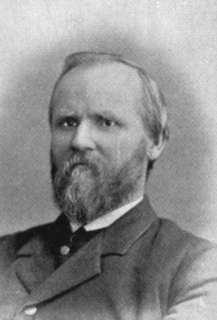
William Nutt was a colonel in the American Civil War, a representative to the Massachusetts General Court from 1871 to 1872 and again in 1901, he was also the chairman of the board of the Natick Five Cents Savings Bank.

Rev. Samuel Spring (1746–1819) was an early American Revolutionary War chaplain and Congregationalist minister.
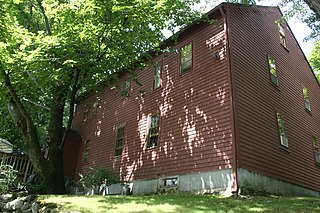
The Benjamin Flagg House is a historic house located at 136 Plantation Street in Worcester, Massachusetts. Built c. 1717, it is considered the oldest structure in the city. It was home to a number of generations of influential Flaggs, including American Revolutionary War Captain Benjamin Flagg (1724–1818). The house was listed on the National Register of Historic Places in 1980.
Joseph Barker Stearns was the inventor of the duplex system of telegraphy.
Timothy Bigelow was an American lawyer in early 19th-century Massachusetts.
Lot Hall was a Vermont attorney, politician, and judge. A veteran of the American Revolution, Hall served as a Justice of the Vermont Supreme Court from 1794 to 1800. His name sometimes appears in written records as "Lott Hall".

The Province of Nova Scotia was heavily involved in the American Revolutionary War (1776–1783). At that time, Nova Scotia also included present-day New Brunswick until that colony was created in 1784. The Revolution had a significant impact on shaping Nova Scotia, "almost the 14th American Colony". At the beginning, there was ambivalence in Nova Scotia over whether the colony should join the Americans in the war against Britain. Largely as a result of American privateer raids on Nova Scotia villages, as the war continued, the population of Nova Scotia solidified their support for the British. Nova Scotians were also influenced to remain loyal to Britain by the presence of British military units, judicial prosecution by the Nova Scotia Governors and the efforts of Reverend Henry Alline.
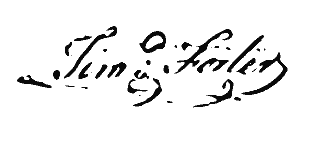
Timothy Foster and his family were the first colonial settlers of Winthrop, Maine. He was a captain in the Massachusetts militia during the American Revolutionary War.

The Bigelow Monument is a public monument in Worcester, Massachusetts, United States. The monument, located in a small cemetery at the center of Worcester Common, honors Timothy Bigelow, a Patriot during the American Revolutionary War. The monument was dedicated on April 19, 1861, the 86th anniversary of the start of the war.
















